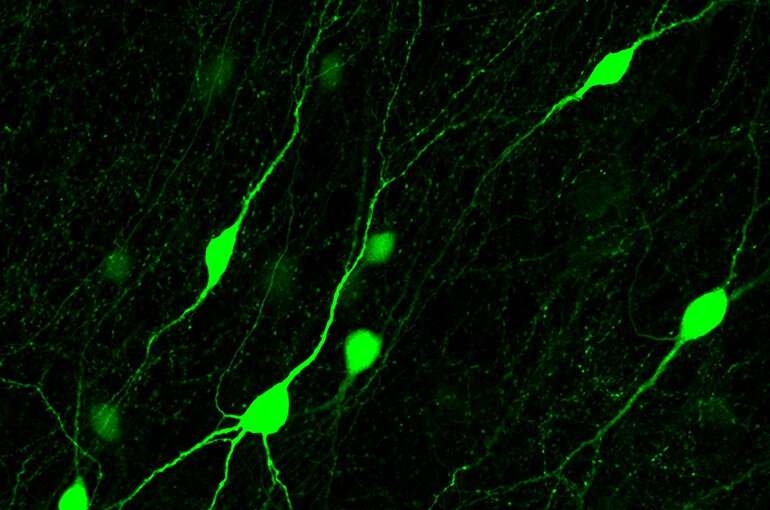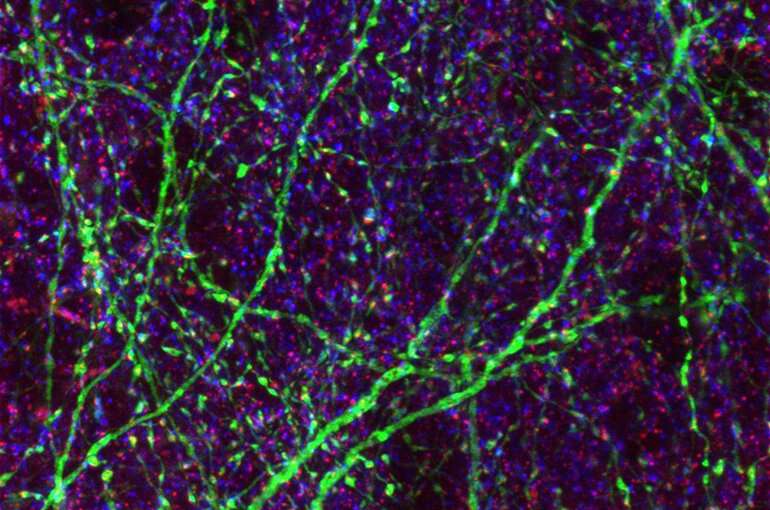Possible link discovered between autism and formation of inhibitory synapses

Neurobiologists Cátia Frias and Corette Wierenga have studied the formation of inhibitory synapses, a complex process that occurs when the brain adapts. Their research uncovered an astonishing link to autism: One of the proteins involved, known as MET, is listed among the risk factors for autism—errors in that protein are found in some people with autism. This shows that there may be ties between autism and the formation of inhibitory synapses. The results of the study were published in Journal of Neuroscience on 26 March.
"Our brain cells pass on information to one another via specialised connections we call synapses," Wierenga explains. "The vast majority of them are 'excitatory,' which means they increase the activity of the receiving neuron. But around 10 to 20 percent of them inhibit that activity. Scientists have only recently begun studying inhibitory synapses. Until perhaps 10 years ago, they were considered not that interesting. But they actually turn out to be extremely important. Inhibitory synapses act like 'directors' that guide the brain's excitatory synapses."
Slices of mouse brain
Synapses are constantly assembled and disassembled, for example, when we learn new things. Wierenga and her colleagues examined the formation of inhibitory synapses using a special microscope that allowed them to observe live neurons in slices of mouse brain. The cells are made visible using fluorescent proteins (biological molecules) that turn them red or green. This two-photon microscope enabled the researchers to follow individual synapses and their changes.

By taking a 'snapshot' every 10 minutes for two hours, the researchers identified which synapses are stable and which ones are being assembled or disassembled. Wierenga says, "We were able to determine that the formation of a new inhibitory synapse is not a simple on/off process, but rather a series of consecutive steps involving specific molecular events. We studied one specific route in detail, and found a surprising link to autism in the process. In the future, we want to continue examining these molecular processes."
More information: Cátia P. Frias et al. Semaphorin4D induces inhibitory synapse formation by rapid stabilization of presynaptic boutons via MET co-activation, The Journal of Neuroscience (2019). DOI: 10.1523/jneurosci.0215-19.2019




















